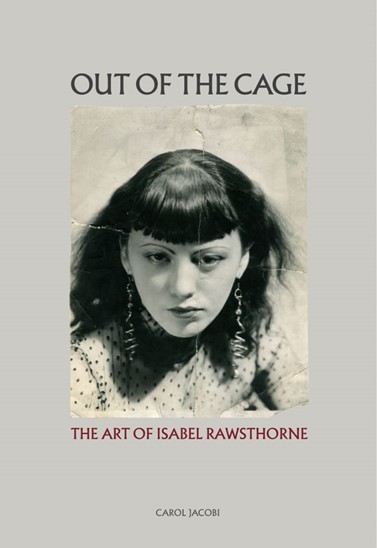
A new publication supported by the Francis Bacon MB Art Foundation: Out of the Cage, The Art of Isabel Rawsthorne
Our institution is pleased to announce the release of the book Out of the Cage, The Art of Isabel Rawsthorne, written by Carol Jacobi, launched and published by The Estate of Francis Bacon with the financial support of the Francis Bacon MB Art Foundation. Martin Harrison, editor of Francis Bacon: Catalogue Raisonné, is the series editor.
Isabel Rawsthorne (1912-1992) was hidden in plain sight. From celebrated portraits of her in Berlin to sketches in the Tate, likenesses in museums around the world have kept her secrets. This book combs the depths of her fascinating life and the extraordinary art she herself made from it.
A contemporary of the Parisian and London avant-gardes, Rawsthorne’s own painting career was somewhat eclipsed by the many occasions on which her friends made her the subject of their art, notably Jacob Epstein, André Derain, Alberto Giacometti, Pablo Picasso and Francis Bacon. Exhibited from the early 1930s, her startling work first garnered serious attention in the 1940s and she was well-known in the 1950s and 1960s; but after she died, popular biographies of Giacometti and Bacon cemented her status not as an artist, but as an artist’s muse.
Exhibiting between 1933 and 1990, usually as Isabel Lambert, Rawsthorne’s art was a poetry of things: an emptied glass, a cut flower, a felled bird, the animal or human body, caught in ephemeral frameworks. Her experiences in France encouraged her eventual rejection of neo-romantic visions of the natural world in favour of an austere contemplation of existence. Known for her unique graphic skill, she saw the touch, mark, and stroke in any media as her means of investigating ‘presence’.
This richly illustrated book takes the lead from Rawsthorne’s compelling biography to reconsider sixty years of her art, now housed in several major public collections. Jacobi re-examines the pre- and post-war art history of which Rawsthorne was a part, tracing the painter’s life and art through the upheavals of the 20th century and her intense and often unconventional relationships with some of its most revered figures. More than a decade of research into Rawsthorne’s work, archives and the memories of her friends brings to light countless revelations.
More information on the book here
Keep in touch. Sign up to our newsletters and special announcements: